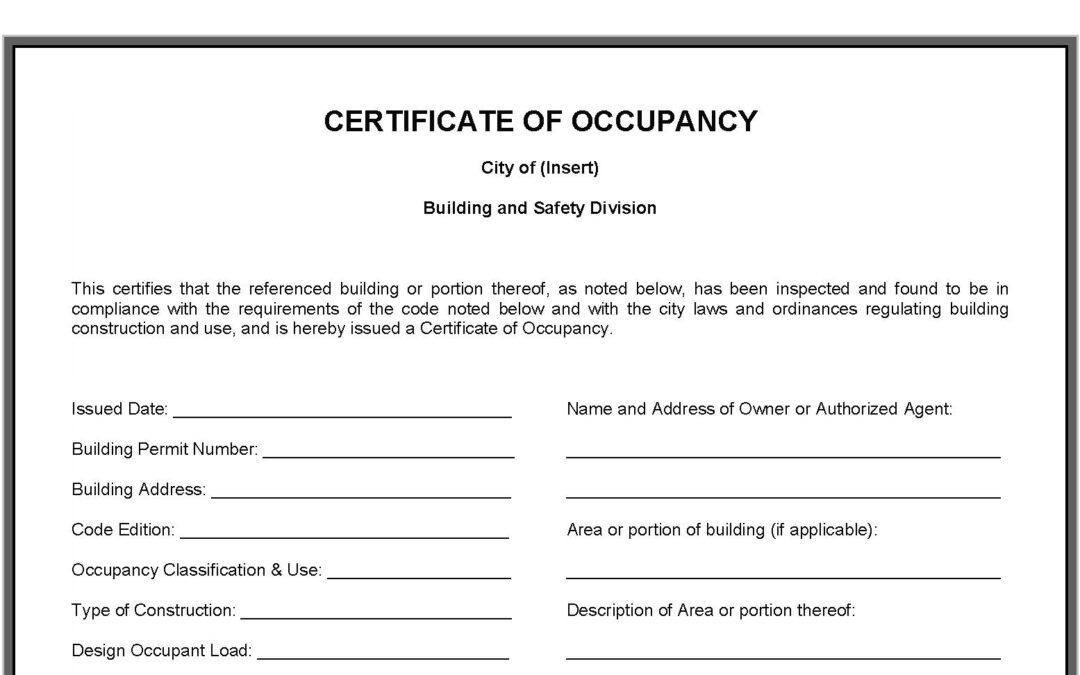




Table of Contents
- Introduction
- What is a Partial Occupancy Certificate?
- When is it Used?
- Requirements for Obtaining a Partial Occupancy Certificate
- Difference from Full Occupancy Certificate
- Legal Considerations
- Is it Safe to Buy Property Without an OC?
- Conclusion
- Faq's
Introduction
A Partial Occupancy Certificate (POC) is a crucial document issued by local authorities, permitting the partial occupation of a building that may not be fully complete. It serves as an essential milestone in the construction process, addressing safety standards and compliance with building regulations. This article will explore what a Partial Occupancy Certificate is, when it's utilized, its differences from a Full Occupancy Certificate, legal considerations, and whether it's safe to purchase property without a valid Occupancy Certificate.

What is a Partial Occupancy Certificate?
A Partial Occupancy Certificate is issued when a portion of a building is ready for use, even if the entire structure is not completed. This certificate ensures that the occupied parts meet safety and regulatory standards set by local authorities, allowing residents or businesses to occupy those sections without full completion of the project.
When is it Used?
POCs are typically used in scenarios where a developer or builder wishes to allow tenants to move into completed portions of a project while other areas are still undergoing construction. This could apply to residential complexes, commercial buildings, or mixed-use developments.
Example:
For instance, in a residential complex with multiple buildings, if Building A is finished but Building B is still under construction, the local authority may issue a Partial Occupancy Certificate for residents to occupy Building A, provided that it meets safety and completion standards.
Requirements for Obtaining a Partial Occupancy Certificate
The specific requirements for a Partial OC vary depending on location and local building codes. However, common requirements usually include:
- Completion of specified sections: The section(s) for which the OC is sought must be fully completed, including structural work, plumbing, electricity, fire safety systems, and other essential services.
- Compliance with building codes and regulations: The completed section must meet all applicable building codes and regulations.
- Inspection and approval: A thorough inspection by the relevant authorities is required to verify compliance before the Partial OC is issued.
- Necessary documentation: Various documents, including architectural plans, completion certificates for different aspects of the construction, and other relevant paperwork, need to be submitted.
Difference from Full Occupancy Certificate
| Feature | Full Occupancy Certificate | Partial Occupancy Certificate |
| Scope | Entire building is complete and ready for use. | Only a specific part of the building is ready. |
| Issuance | After the completion of the entire building. | During construction, for completed sections. |
| Occupancy | Full occupancy allowed for the entire building. | Occupancy allowed only for the specified par |
Legal Considerations
Purchasing property without an Occupancy Certificate, whether full or partial, can pose significant legal risks.
- Buyers might face hurdles such as: Legal Liabilities: Buyers may become liable for any legal violations associated with the property.
- Lack of Permits: The absence of OCs or POCs can lead to fines and penalties from local authorities.
- Difficulties in Obtaining Financing: Financial institutions may require valid occupancy documents before granting loans.
Is it Safe to Buy Property Without an OC?
Buying property without an OC can be risky. Without proper documentation, buyers may encounter numerous challenges, including legal disputes and compliance issues. It's advisable to verify the occupancy status of a property before making a purchase.
Conclusion
A Partial Occupancy Certificate is an essential gateway for developers and occupants wanting to utilize a building's completed sections while awaiting full compliance. Understanding its purpose, requirements, and legal implications is crucial for both buyers and builders. When considering a property purchase, always ensure that appropriate occupancy certificates are in place to safeguard your investment.
explore further
Latest from Home Buying Tips
More from Recommendations
Resources
Dwello, for every home buyer, is a way to go from 'I feel' to 'I know', at no extra cost.




